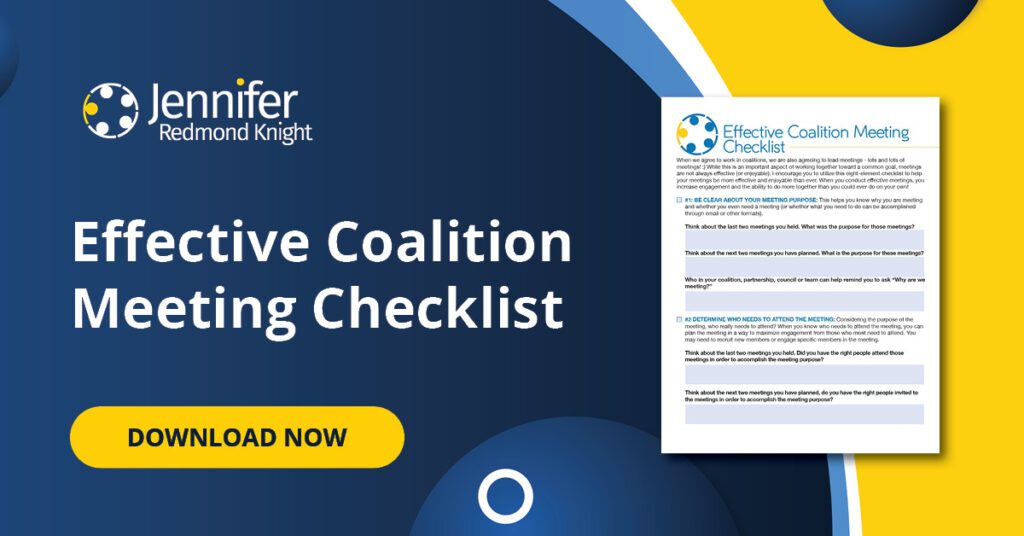If you are in the business of leading coalitions, you are also in the business of leading meetings – lots of meetings! 🙂 Over the past 20 years, I have adopted ome “guiding principles” that I like to apply to the meetings that I both lead and attend. One of my favorites is to “be a teacher of others and a learner from others.” When we participate in meetings with this perspective, we are able to humbly open our minds to learning from those around us and we are able to share ideas that we have with the group as well. This posture opens engagement and values the contributions of everyone in the group. Join me this week for three ways to practice this guiding principle of being both a teacher and a learner.
Be ready.
As you prepare for a meeting, be ready with resources to share that may be relevant to your audience and context. Take time to review the agenda, consider those who are presenting and what would be most useful for them to learn from you. If you have a formal role in the meeting, clarify the purpose of the meeting and what the participants will find most valuable. If you do not have a formal role in the meeting, be ready to share resources, opportunities and connections as it fits within the meeting. When participating, present the information in the time allotted and allow time for others to share as well.
Be open.
As you participate in the meeting, be open to learning from others. Even if you know the speakers and the expected content well, take time to actively listen and not assume you know what they are going to say. You may be surprised by what you learn when you listen with openness. This includes listening to those who you may have disagreed with in the past. When we attend a meeting with an openness to learn from others, we are more likely to learn as well as create an atmosphere of engagement and inclusion in the meeting.
Pay attention.
Whether we are part of a virtual or in–person meeting, there are many opportunities for distraction. Although it takes discipline and often means turning off notifications and email, when we pay attention during a meeting, we have the ability to enhance our ability to both teach and learn. Paying attention involves both listening to what is said as well as watching the non-verbal cues displayed during the meeting. If you are in a virtual meeting, watch the chat and the reactions to help you pay attention to what is happening during the meeting. If you find yourself becoming distracted, notice that distraction and make a commitment to yourself and the rest of the participants to come back to the meeting.
What about you? What are you going to practice this week as you are both a teacher of others and learner from others?
For more support in leading effective meetings, check out my free “Effective Meeting Checklist”

